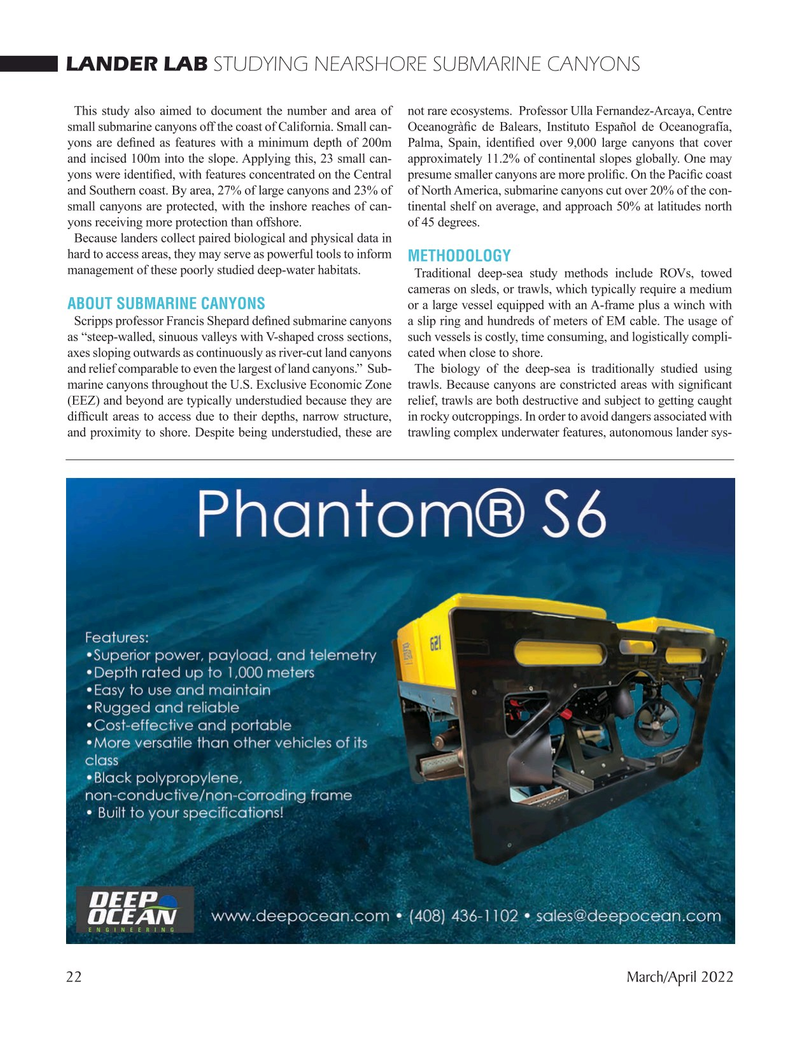
Page 22: of Marine Technology Magazine (March 2022)
Read this page in Pdf, Flash or Html5 edition of March 2022 Marine Technology Magazine
LANDER LAB STUDYING NEARSHORE SUBMARINE CANYONS
This study also aimed to document the number and area of not rare ecosystems. Professor Ulla Fernandez-Arcaya, Centre small submarine canyons off the coast of California. Small can- Oceanogrà? c de Balears, Instituto Español de Oceanografía, yons are de? ned as features with a minimum depth of 200m Palma, Spain, identi? ed over 9,000 large canyons that cover and incised 100m into the slope. Applying this, 23 small can- approximately 11.2% of continental slopes globally. One may yons were identi? ed, with features concentrated on the Central presume smaller canyons are more proli? c. On the Paci? c coast and Southern coast. By area, 27% of large canyons and 23% of of North America, submarine canyons cut over 20% of the con- small canyons are protected, with the inshore reaches of can- tinental shelf on average, and approach 50% at latitudes north yons receiving more protection than offshore. of 45 degrees.
Because landers collect paired biological and physical data in hard to access areas, they may serve as powerful tools to inform
METHODOLOGY management of these poorly studied deep-water habitats.
Traditional deep-sea study methods include ROVs, towed cameras on sleds, or trawls, which typically require a medium
ABOUT SUBMARINE CANYONS or a large vessel equipped with an A-frame plus a winch with
Scripps professor Francis Shepard de? ned submarine canyons a slip ring and hundreds of meters of EM cable. The usage of as “steep-walled, sinuous valleys with V-shaped cross sections, such vessels is costly, time consuming, and logistically compli- axes sloping outwards as continuously as river-cut land canyons cated when close to shore. and relief comparable to even the largest of land canyons.” Sub- The biology of the deep-sea is traditionally studied using marine canyons throughout the U.S. Exclusive Economic Zone trawls. Because canyons are constricted areas with signi? cant (EEZ) and beyond are typically understudied because they are relief, trawls are both destructive and subject to getting caught dif? cult areas to access due to their depths, narrow structure, in rocky outcroppings. In order to avoid dangers associated with and proximity to shore. Despite being understudied, these are trawling complex underwater features, autonomous lander sys- 22 March/April 2022
MTR #3 (18-33).indd 22 2/25/2022 9:23:44 AM

 21
21

 23
23
